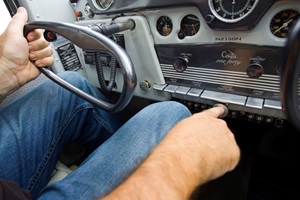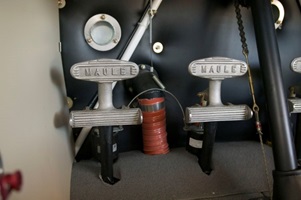The Basics of Flight
Safety Spotlight: Pinch Hitter

If you focus on the basics, flying an airplane is not complicated.
Airplanes are built to be stable. The next time you fly, ask your pilot to take their hands off the controls. There won’t be much, if any, change in the aircraft’s position.
The Four Forces
Four forces act on an airplane that determine how it flies.

- Lift: While in flight, the airplane is supported by lift. Lift is the force acting opposite of gravity and is generated whenever air flows smoothly over a wing. As air flows over and under the wing, an area of low pressure is created above the wing, acting to pull the airplane up. When lift exceeds gravity, the aircraft will leave the ground and climb.
- Weight: Weight is caused by gravity and acts to pull the airplane toward the ground.
- Thrust: The airplane’s propeller acts like a wing turned on its side. In this case, the lift is known as thrust, and the low pressure in front of the propeller pulls the airplane forward, much as the engine and propeller of a ship provide thrust in the water.
- Drag: Drag is the force that opposes thrust. It’s the same force you feel if you extend your arm out of the window of a fast-moving car. As you might imagine, drag increases as speed increases.
If you focus on the basics, flying an airplane is not complicated.
 Pilot Controls
Pilot Controls
Yoke: The main control is the yoke, or stick, which is like the steering wheel in a car. It is used to pitch the airplane up and down and roll the airplane left and right. When you pull back or push forward, you move the elevator. When you roll left or right, you move the ailerons.
Pitch


Roll


 Rudder: The rudder is the movable part of the airplane’s tail. The rudder is controlled by the foot pedals and is responsible for ground steering and controlling yaw. The rudder pedals also typically control the brakes.
Rudder: The rudder is the movable part of the airplane’s tail. The rudder is controlled by the foot pedals and is responsible for ground steering and controlling yaw. The rudder pedals also typically control the brakes.


Flaps: Extending the flaps helps the airplane fly at slower speeds—such as when landing. Not all flap controls are the same, so ask your pilot where to find the flaps the next time you fly.



Landing gear: If your airplane has retractable landing gear, it is controlled by a small wheel-shaped lever.
 Engine Control
Engine Control
Throttle: Technically, the throttle controls the amount of air entering the engine. Treat the throttle like a gas pedal in a car: push it in to go faster and pull it out to go slower.
Mixture: The mixture controls the fuel to air ratio mixture in the engine. Pilots “lean the mixture” to keep the engine running efficiently at high altitudes. There is no equivalent in a modern car.
In the Air
Most flying is done by looking outside and referencing the horizon.
Level flight: Level flight means flying at a constant altitude—not going up or down.
Turning: When you move the yoke/stick to the left or right, the airplane will roll in that direction.
Climbing: When you pull back on the yoke/stick, the airplane starts a climb. To help the airplane climb, push the throttle forward.
Descending: When you push forward, the airplane begins a descent. To help the airplane descend, pull the throttle out slightly.